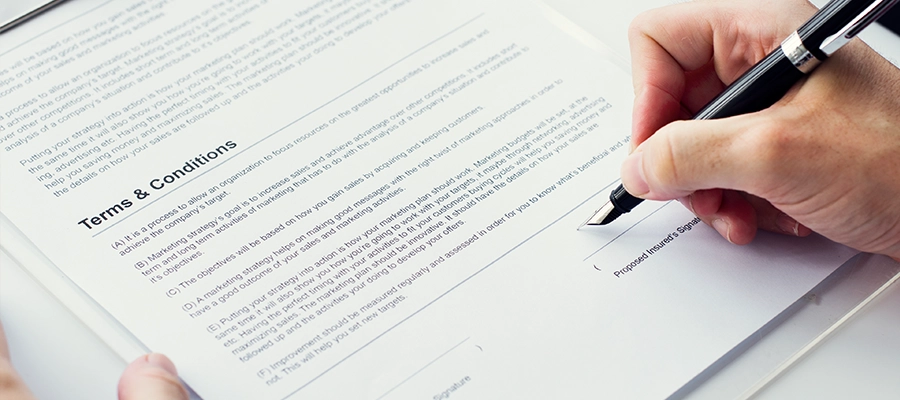Blog Content Overview
TAX
A tax is a compulsory fee or financial charge levied by the government on the income, profits, occupation, property, transaction, etc. of the taxpayer. It is everyone’s contribution to the fund for making common public expenditures. Basically, taxes are a source of revenue to run the country for economic growth and development. Some also consider it as a transfer of wealth/ contribution from the rich to the poor betterment via the government.
TAXPAYER
Everyone who earns or gets an income in India is subject to income tax. But taxes are collected from those whose income is more than the basic exemption limits prescribed by the government. A taxpayer may be an individual, a partnership firm, a company, the government itself, and any other legal entity. He may or may not be a citizen of India and he may or may not be a resident of India.
TAX COLLECTOR
The Ministry of Finance heads the Department of Revenue, which functions under the direction and control of the Revenue Secretary. He exercises control through two statutory bodies – the Central Board of Direct Taxes (“CBDT”) and the Central Board of Indirect Taxes and Customs (“CBIC”). There are many taxes levied by the state governments and local bodies also.
TYPES OF TAX
There are two groups of tax systems – progressive and regressive. Progressive is the one where the tax rate increases with the taxpayer’s income. While regressive is the one where the tax rate decreases with an increase in income. The former is beneficial for rich people. India follows the progressive tax system.
Direct Taxes
Direct taxes are collected from the person directly. Parliament passes the finance bill every year to give effect to any amendments proposed in the income tax law and to specify the rates of income tax for the purpose of self-assessment tax, advance tax, and tax deducted at source. Eg income tax, equalization levy, etc.
Indirect Taxes
Indirect taxes are the taxes that are imposed on goods and services. They are collected by the source that sells the product/ services thereby increasing the cost of the product/ services. eg. goods and services tax, excise and customs duty, securities transaction tax, commodities transaction tax, entertainment tax, etc.
Other Types
Stamp duty, registration fees, property tax, toll tax.
DIRECT TAX:
Taxable Income
As per the income tax act, the “total income” of the year of a person is charged to income tax. Certain deductions are allowed to be deducted from the total income, eg. investments to provident fund, the premium for life insurance and medical insurance, interest income from the savings bank, principle/ interest paid for a home loan and the education loan, etc. (all these are subject to provisions of the income tax laws).
“Total income” includes the income earned or received or accrued or arose in India or outside India depending on the residential status of the person and other provisions of the law to bring the taxability. The income tax act has not exhaustively defined the term income but extensively covered many types and sources of income.
Direct tax is divided into 5 main categories of income – salary income, income from house property, income from business/profession, capital gains, and income from other sources.
Exempt Income
Certain incomes are treated as exempt, which will not be included in the calculation of total income, eg. agriculture income, house rent allowance, the share of profit derived from partnership firm, gratuity, pension, the amount received under life insurance policy, etc. (all these are subject to provisions of the income tax laws). It is worth noting that exempt income has to be disclosed separately in the return though not under the income statement.
Don’t get confused between deductions and exempt income – deduction reduces total taxable income while exempt income is excluded from total taxable income.
RETURN OF INCOME
To ensure each person that there is a financial record of all the incomes, expenditures, losses, gains, losses, and taxes for each year, a return has to be filed by all those coming under the threshold limits. The return has to be filed annually for the period ranging between April to March i.e. Financial year.
| Type of person | When to file* | Due Date* | Form* |
| Company | Always | 31st October | ITR 6 |
| Firm | Always | Non audit – 31 July Audit : Audit report – 30 September Return – 31 Oct | ITR 4 – having presumptive income ITR 5 – others |
| LLP | Always | Non audit – 31 July Audit : Audit report – 30 September Return – 31 Oct | ITR 5 |
| Individual | If the total income exceeds the basic exemption limits | Non audit – 31 July Audit : Audit report – 30 September Return – 31 Oct | ITR 1 – not having business income and total income should be up to 50 Lakhs ITR 2 – not having business income ITR 3 – having business income TR 4 – having presumptive income |
| HUF | If the total income exceeds the basic exemption limits | Non audit – 31 July Audit : Audit report – 30 September Return – 31 Oct | ITR 2 – not having business income ITR 3 – having business income ITR 4 – having presumptive income |
*unless amended/ otherwise notified by CBDT
Please note that the above table has been prepared based on generic detail and may subject to the addition/ deletion of any forms as prescribed by CBDT.
TAX AUDIT
Concept
Audit refers to the official inspection of an organization’s accounts and production of reports. Tax audit is an examination or review of accounts of business or profession carried out by taxpayers from an income tax point of view.
Audit is applicable to any person who:
- Carries on business & sales, having turnover or gross receipts exceeds INR 1 Cr for the financial year. Subsequently, the limit has been increased to 5 Cr and recently in budget’21 to 10 Cr subject to certain conditions.
Simply put – If your turnover exceeds 1 Cr/ 10 Cr as the case may be, have a look at the applicability.
- Carries on profession, having gross receipts exceeds INR 50 Lakhs for the financial year.
- Taxpayer carrying on business or profession & income declared is less than 8% or 6% (i.e. not following presumptive taxation).
Accounts have to be audited by a prescribed accountant within the due dates specified above in form 3CA/3CB and Form 3CD.
PRESUMPTIVE TAXATION
Concept
Presumptive taxation scheme was introduced to give relief to small taxpayers from the tedious work of maintenance of books of accounts. They can compute income on an estimated basis at the rates prescribed.
| Income | Applicable to | Threshold limit | Prescribed rate |
| Business income | Individuals, HUF, partnership firm | Less than 2 Cr of sale or turnover or gross receipts | 6% for digital transactions. For others receipts – 8% |
| Professional income | Professionals | Less than 50 Lakhs of gross receipts | 50% of gross receipts |
Once the rates are applied, no other expense can be claimed. The income so generated shall be treated as final income from that business/profession.
Tax Deducted at Source (“TDS”)
Concept
We all love EMIs and so does our government. TDS is one such system that enables us to pay tax on the income as and when we earn it. It is not feasible to pay a large amount in one go and hence it is convenient for the taxpayers as the tax gets deducted automatically. It is one of the steadiest forms of revenue for the government. Tax is withheld at the source (called the deductor) and whose tax is withheld (the deductee) can claim such taxes paid in his return of income.
Example
- Nisha works for an organization named TLC. TLC will collect all the income and investment declarations and will accordingly compute and deduct tax as per slab rates while paying the monthly salary. Nisha can claim this deducted tax at the time of preparing her return of income.
- Kunal has given one of his commercial properties on rent to M/s. Sharma Enterprises. The firm shall deduct tax from the rent which is to be paid to Kunal and pay the net rent.
Rates of TDS are :
Individuals and HUF shall deduct TDS only if a tax audit is applicable to them. Others shall always deduct TDS if the threshold is crossed.
| Particulars | Rate of TDS# |
| Salary income | Slab rates of the deductee |
| Interest on securities | 10% |
| Interest from banks and other sources | Threshold limit – INR 5,000 – 10% |
| Payment to contractor | Threshold limit – INR 30,000/ 1,00,000 aggregate Individual/HUF – 1% Others – 2% |
| Commission or brokerage | Threshold limit – INR 15,000 – 5% |
| Rent | Threshold limit – INR 2.4 Lakhs Plant & machinery – 2% Land and building or furniture – 10% |
| Professional services | Threshold limit – INR 30,000 – 10% |
#unless amended/ notified by CBDT.
TDS Return
The deductor is responsible to pay the taxes deducted to the government on a monthly basis and also file a compulsory quarterly return. A Tax deduction and collection number (TAN) has to be obtained by the deductor for itself and has to be quoted in the TDS return. The payee (deductee) has to provide his PAN, if the PAN is not provided then the deductor shall deduct tax at the higher rate of 20% (reduced to 5%).


| TDS Return | Form |
| TDS for salaries | Form 24Q |
| TDS for payments other than salaries | Form 26Q |
| Tax collected at source | Form 27EQ |
TDS Certificate
Every person deducting tax at source is required to furnish a certificate to the payee to the effect that tax has been deducted along with certain other particulars. This certificate is usually called the TDS certificate. Individuals are advised to request for a TDS certificate wherever applicable.
To view how much of your TDS is deducted for a year, a Form 26AS can be downloaded from the e-filing website. The TDS reflected here can be claimed in the return.
Lower deduction of TDS
If the assessee (other than company or firm) is sure that there is no taxable income for the year, he can submit a self-declaration form (Form 15G or 15H) to the deductor stating that his taxable income is less than the basic exemption limit and so not to deduct TDS on the payment.
If the assessee (everyone) is of the opinion that he would not be paying any tax for the year owing to losses or exemptions or that his yearly tax is going to be less than the total TDS deducted, then he shall make an application for lower or no TDS before the assessing officer (AO) in Form 13. The AO shall assess the application and if satisfied shall grant the permission. This permission letter has to be given to the vendor and shall remain valid for a period as specified by the AO.
These forms also reduce the hassle for claiming refunds every year.
ADVANCE TAX
Concept
It is the “pay-as-you-earn” scheme of the government. The assessee has to pay part of their taxes before the end of the year. The difference between advance tax and TDS is that advance tax is collected from the taxpayer itself whereas TDS is collected from the payee itself.
Monetary limit & Payment
Once the tax amount exceeds INR 10,000, the assessee has to pay advance tax. It applies to all taxpayers excluding those above 60 years of age who have no business income. It is calculated as per normal total income and tax calculations but on an estimated basis and divided as per the following schedule:
| Advance Tax | Due Date |
| 15% of advance tax | 15th June |
| 45% of advance tax minus already paid | 15th September |
| 75% of advance tax minus already paid | 15th December |
| 100% of advance tax minus already paid | 15th March |
However, all taxes paid before 31st March are considered as advance tax. Those having incomes as per presumptive taxation have to deposit the whole advance tax on 15th March. Non-payment or short payment leads to interest charges.
SELF ASSESSMENT TAX
What all tax is left to be paid after TDS and advance tax is self-assessment tax. This is before filing the return of income and after considering all the actual incomes, gains, and deductions of the year on a self computation basis.
Like advance tax, this tax is also directly paid by the assessee but there is no specific due date for the same. Just that it should be on or before filing the return.
BELATED RETURN
If you miss filing your return on the original due date, it can be filed anytime before 31st December of next FY (unless notified by CBDT). But the losses cannot be carried forward to next year (except house property loss). The maximum fine to file a belated return is INR 10,000.
REVISED RETURN
If you have made any mistake in the original return, it can be revised, provided the original one was filed at the right time. Revised return can be filed before 31st December or before your assessment of income is completed (if conducted), whichever occurs earlier (unless notified by CBDT).
ASSESSMENT OF INCOME
Concept
After filing an income tax return, a tax officer may be assigned by the Income Tax department randomly based on certain criteria to undertake an examination. If a taxpayer is selected for scrutiny assessment, the Assessment Officer would issue an income tax notice to the taxpayer for the same.
Notice
Further, the tax officer would request certain information, documents and book of accounts for undertaking the scrutiny assessment. On producing the information and documents requested, the income tax officer would complete an assessment and compute the amount of income and tax payable by the taxpayer.
Appeal
If there is any mismatch in the amount of taxable income or taxes to be paid, the taxpayer could agree with the order passed by the Officer and pay the demand or accept any amount of refund, or loss as determined by the tax officer. Or if not acceptable then file an appeal before the Commissioner (Appeals), further to Tribunal, High Court, and Supreme Court.
EQUALISATION LEVY
Concept
“Whole world is a market place”. It is the era of growing digitalization where everything happens without any physical presence and hence it becomes important for businesses to expand globally. Governments have tax laws to bring under its ambit even the advertisements and marketing income from the overseas market.
equalisation levy is the Indian version to tax the non-residents receiving such online advertising income from resident Indian businesses.
Further, budget’20 has introduced a new equalisation levy to tax the non-resident e-commerce operators.
Example
M/s Infotainment Pvt Ltd paid USD 7,000 to Facebook. The company need to deduct an equalisation levy @ 6% while making payments to Facebook.
Monetary Limits & Return
Old equalisation levy –
The aggregate amount of services rendered by the non-resident to one party should exceed INR 1 Lakh to trigger the levy. It is an indirect tax whereby the payer (Indian) has to deduct tax @ 6% while paying to the service provider (non-Indian).
New equalisation levy –
The aggregate amount of gross receipts/ turnover of such non-resident e-commerce operators from online sales of goods or services should be INR 2 crores in a year to trigger the levy. It is a tax whereby the e-commerce operator (non-Indian) has to collect tax @ 2% on consideration received from the service provider (Indian).
The above practice of tax deduction is followed by paying the tax to the central government and return filing (Form 1) on or before 30 June of the relevant year.
We Are Problem Solvers. And Take Accountability.
Related Posts


Conversion of Partnership Firm to LLP – Step by Step Process
For many entrepreneurs in India, a partnership firm serves as the foundational legal structure for their business ventures. However, as...
Learn More

Memorandum of Association – MoA Clauses, Format & Types
The Memorandum of Association (MOA) is one of the most essential documents in the company incorporation process, forming the foundation...
Learn More

POSH Compliance Checklist in India – Complete Guide
The POSH Act, formally known as the Sexual Harassment of Women at Workplace (Prevention, Prohibition and Redressal) Act, 2013, is...
Learn More












